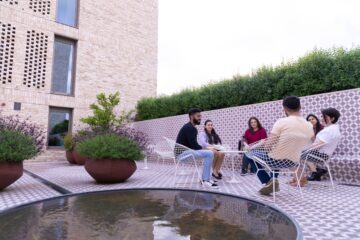Ismaili Heritage
In his April 2003 address inaugurating the gardens of Humayun’s Tomb restored by the Aga Khan Trust for Culture (AKTC) in Delhi, India, His Highness the Aga Khan observed that its chahar-bagh (lit. four gardens) construction, the first in the sub-continent to surround a Mughal tomb, was
an attempt to create a transcendent perfection — a glimpse of paradise on earth.
Speaking about the restored gardens becoming ‘the fulcrum and catalyst for socio-economic development as well as an irreplaceable resource for education,’ the Aga Khan went on to assert that ‘Whether through neglect or wilful destruction, the disappearance of physical traces of the past deprives us of more than memories. Spaces that embody historic realities remind us of the lessons of the past.’
‘How,’ he asked, returning to Humayun’s Tomb 18 months later in November 2004 for the Ninth Cycle of the Aga Khan Awards for Architecture (AKAA), ‘do we protect the past and inspire the future?’
This and related questions on the vital role of heritage in human flourishing led to a proposal in 2007 to document Ismaili heritage sites globally as a Golden Jubilee initiative.
Ismaili heritage sites identified around the world
Ismaili heritage sites documented
countries around the world where sites have been identified
About the Ismaili Heritage (IH) Project
The scope, criteria, and understanding of what constitutes Ismaili heritage and how to document it came together over time through many discussions and debates held between 2008-2014. During that period, an inventory of sites was developed. The Ismaili Heritage (IH) Project was formally established in 2015, providing IH with a home at IIS.
IH is a tripartite collaboration and truly joint project between The Institute of Ismaili Studies in London, Aga Khan Trust for Culture in Geneva, and Ismaili Imamat institutions.
IH is guided by key principles articulated by His Highness the Aga KhanA title granted by the Shah of Persia to the then Ismaili Imam in 1818 and inherited by each of his successors to the Imamate., including to:
- develop an ‘encyclopaedic database’ of sites
- take pride in the symbols of Ismaili history
- validate Shi’i voices and understand Ismaili contributions to Islamic civilisation



